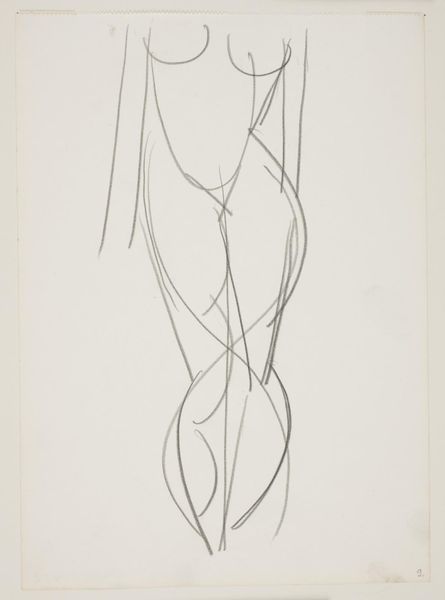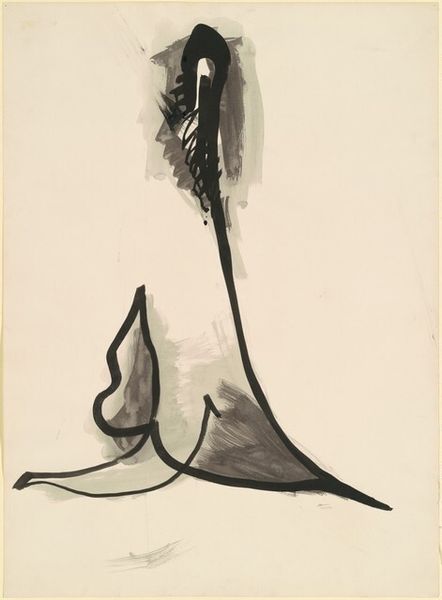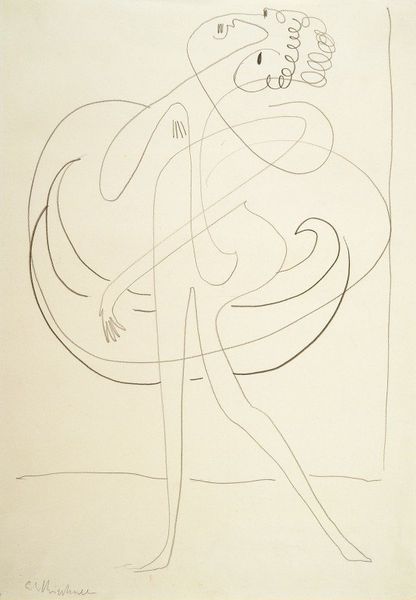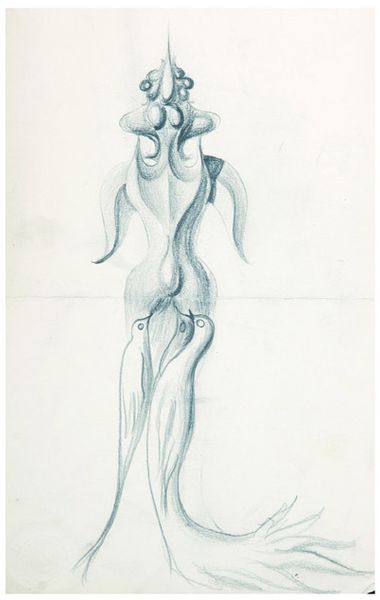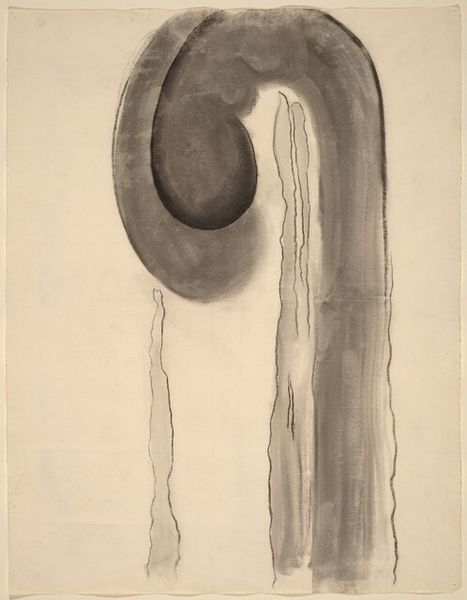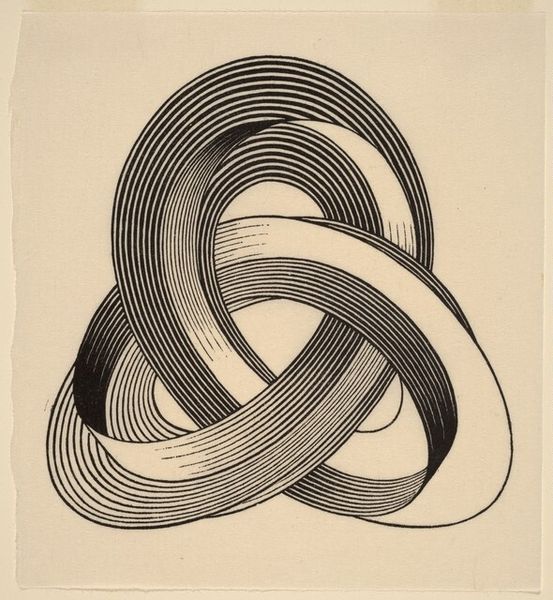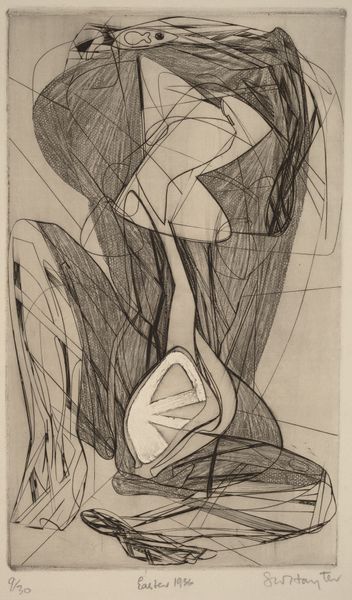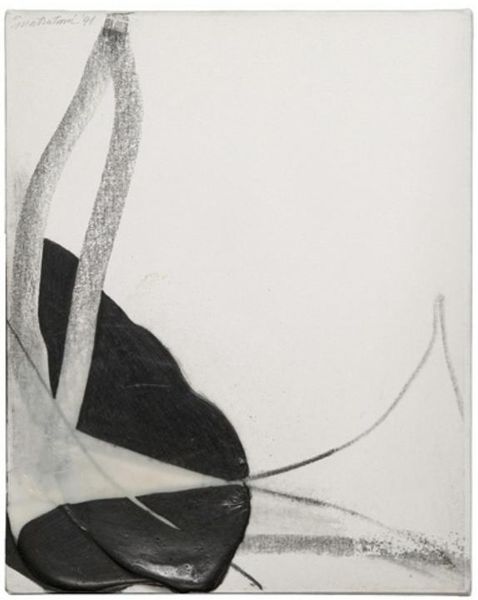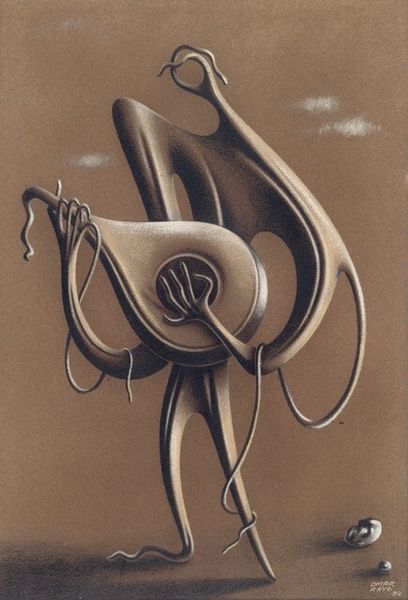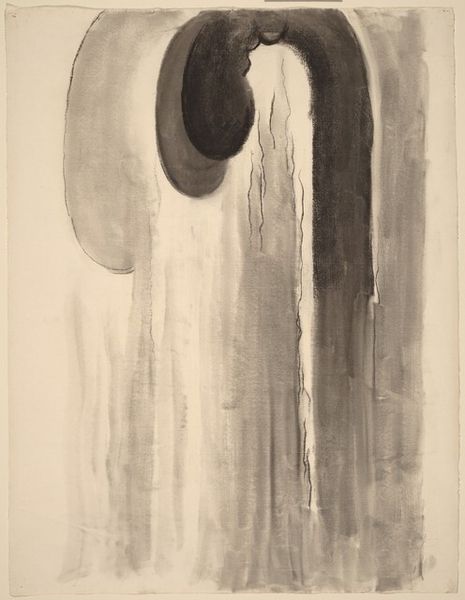
drawing, graphite
#
pencil drawn
#
drawing
#
pencil drawing
#
geometric
#
abstraction
#
graphite
#
modernism
Dimensions: 61 x 48.3 cm
Copyright: Public domain US
Editor: Here we have Georgia O'Keeffe's "Drawing XII," created in 1916 using graphite. I’m immediately struck by the drawing’s fluidity and how it hints at something organic while remaining abstract. What do you see in this piece? Curator: It's a powerful drawing. Looking at it through the lens of its historical context, consider the early 20th century and the rise of both modernism and conversations around gender and sexuality. O'Keeffe was working in a male-dominated art world, and her exploration of abstract forms can be seen as a deliberate departure from traditional representation. This abstraction can be interpreted as a feminist act, rejecting established patriarchal artistic conventions. How might this interpretation resonate with you? Editor: That's fascinating. So, the very act of abstracting, of not adhering to the male gaze, becomes a statement in itself? Curator: Precisely. Moreover, the fluid lines and suggestive forms have often been linked to female anatomy and experience. While O'Keeffe herself resisted such direct interpretations, we can still consider how the work contributes to broader conversations about female identity and the representation of the female body. How do you feel this adds or subtracts from the work? Editor: It definitely adds layers to it. It makes me think about how we assign meaning to art based on who created it, not just what's on the surface. Curator: Exactly. Considering the socio-political context in which an artwork emerges encourages a deeper understanding of its potential meanings and significance. It makes us ask more critical questions, and be conscious of any imposed bias in our analysis. Editor: I see it now! It gives a broader context that changes how we view O'Keefe's drawings. Thank you.
Comments
No comments
Be the first to comment and join the conversation on the ultimate creative platform.
